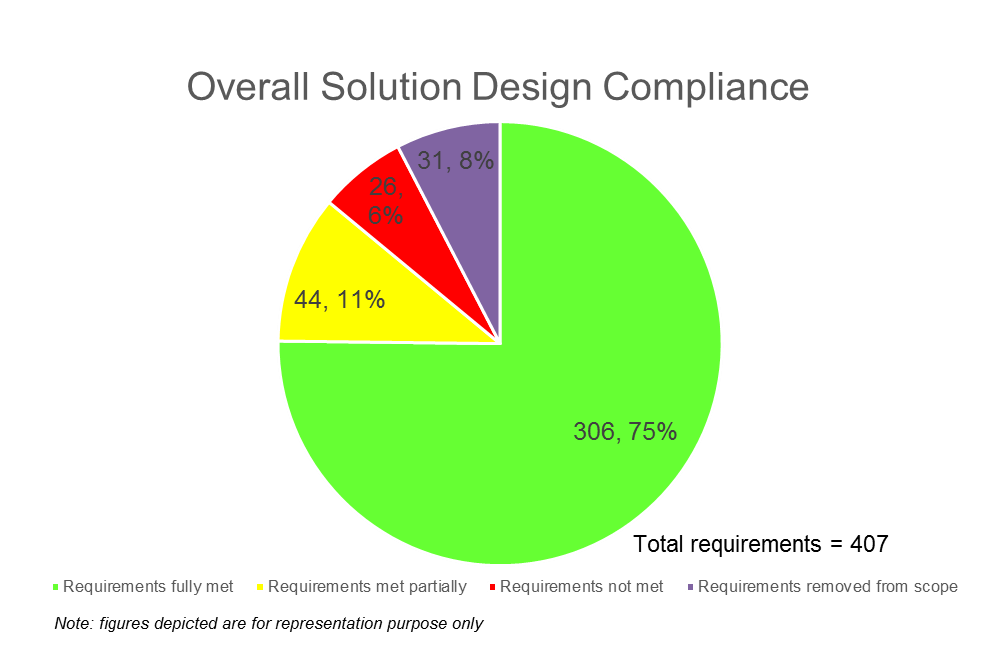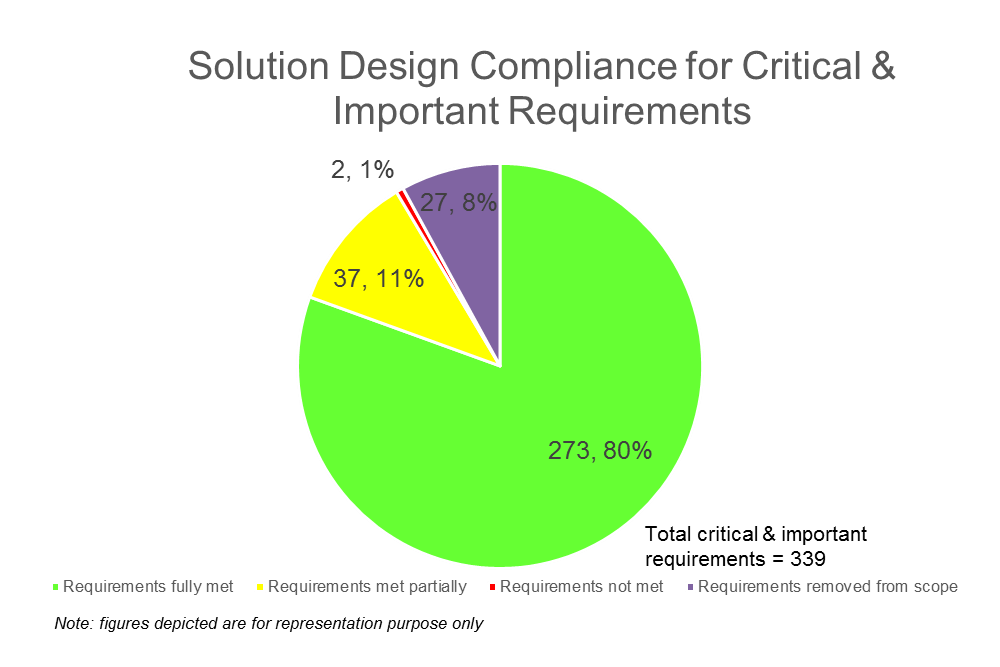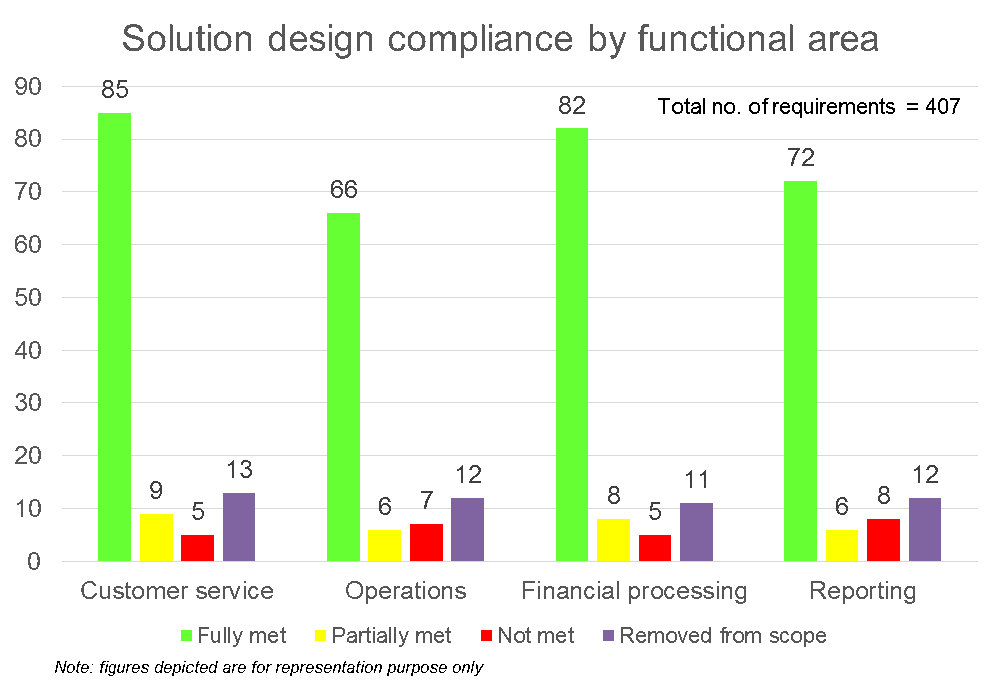Effective Meetings
Keep your ears open and you will hear the likes of “Well that was a good meeting, I got exactly what I wanted and everyone is clear on the next steps!”…
or “We spent an hour and still my questions are unanswered and nobody knows what’s to be done next. It was just a waste of time!”. Sounds familiar? Do you hear these around you or hear yourself saying something similar about your stakeholder meetings? Yes? …Read on.
To start with, who are these stakeholders? Why are they important? Why do we need to meet them? And why such a meeting is so important that I had to write an article about it? A stakeholder or a group of stakeholders has a vested interest in the business or a project or a solution and can either impact or be impacted by it. They can assume many roles such as a Customer, a SME, a Project Manager, a Product Owner, and a Sponsor amongst others. A stakeholder is an important entity in the world of business analysis as they can be a source of requirements, decisions, assumptions or constraints.
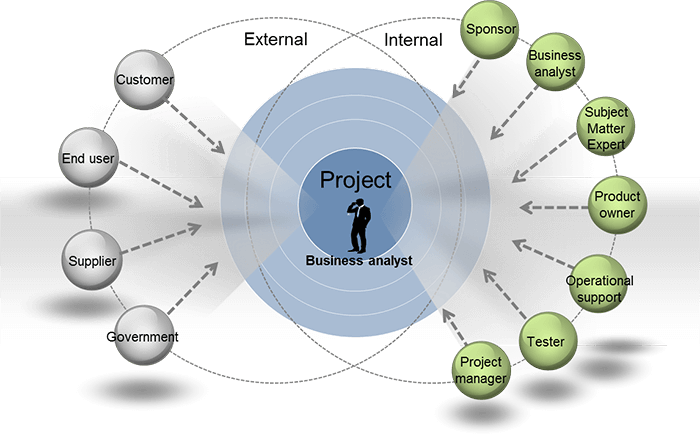
A Business Analyst is likely to interact directly or indirectly with a stakeholder and each such interaction is too important to be taken lightly. With a bit of preparation and structure, a Business Analyst can achieve a lot from these interactions, but go unprepared and they can soon prove to be a waste of time.
Here are a few tips that a Business Analyst can use to ensure they get the most out of their stakeholder meetings.
- Stakeholder maps: Merely generating a list of stakeholders for the project is not enough. It’s important for a business analyst to understand their characteristics, their level of influence and their level of interest too. Do some investigation on your stakeholders beforehand. Make use of stakeholder maps that will help depict the relationship of stakeholders to the solution you are working on. Drawing up a stakeholder matrix will help you map their level of influence against their level of interest.
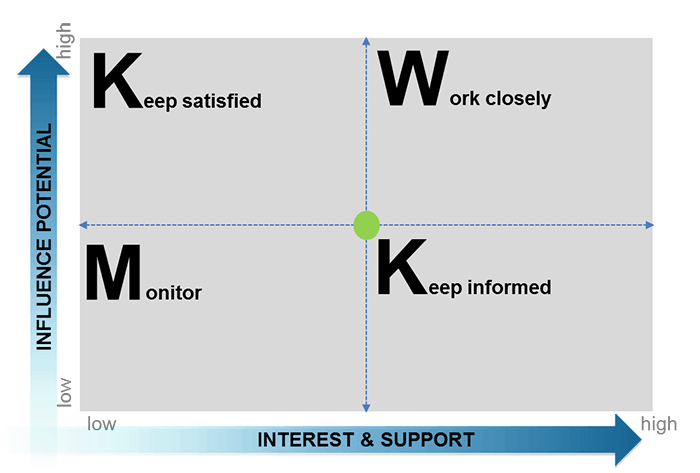 An onion diagram will help depict their level of involvement with the solution you are working on and their position within the organization or outside of it.
An onion diagram will help depict their level of involvement with the solution you are working on and their position within the organization or outside of it.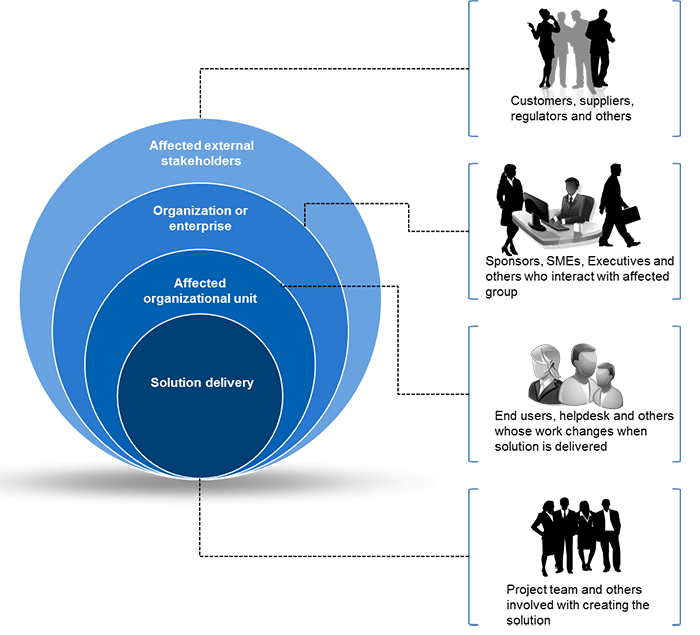
- Know your stakeholders: Go an extra-mile to know your stakeholders well. I remember working on a complex intranet implementation project where I had to work with two very senior stakeholders. Both had a different style of working. The first one needed information and proposal pitched at a very high-level and would provide direction, decisions and requirements at high-level with a confidence that I will figure out the details. The second stakeholder was exactly opposite, everything had to be worked out to the miniscule detail. I soon realised this difference and amongst other things, I tailored my pitch, content, slide packs and discussions. The slight tweak in my approach helped me a great deal in having focused discussions and overall effective meetings.
- Preparation: In most ‘connected’ work environments, the use of productivity office tools such as email client, scheduler and others is prevalent. Prepare your approach for the stakeholder meeting. Mostly this will start with an email calendar invite. A poorly written email invite might just get ignored, questioned or worst – declined for lack of clarity. Consider the following points to convey a comprehensive message:
- Provide background and state the key purpose of the meeting – E.g. “I am reaching out to you to discuss the enablement of bulk-purchase of 6-star badges on the ePublic portal.”
- Articulate your key expectation. Detail what is needed as an action from the stakeholders. E.g. “As a part of this meeting, we need to review the recommendations provided in the options analysis exercise and decide upon the most feasible option to enable the bulk-purchase feature.”
- Help them understand any implications of their actions. “A timely decision on the most feasible option will help kick-start a potential $1.2M revenue stream for the department by the start of the Christmas season and….”
- Pre-read: If you have a slide pack to be presented or a document to be referred to at the meeting, it’s a good idea to attach it to the calendar invite as a pre-read. We hope and pray that our stakeholders own up the accountability and read the material so that they are ready for a valuable discussion about things that really matter. To achieve this, a little diligence is required. Ensure that the pre-read material includes only the important and relevant information and not the entire slide pack or document you intend to present. Provide enough time for people to read the pre-read and don’t send it out the night before, you will be setting up unrealistic expectations. Provide specific information about what is to be done with the pre-read – is it for information, are you looking for recommendations on an options analysis or something else.
- On the day of the meeting: Ok, hoping you’ve had a good night’s sleep, its time now you own the meeting. At the basic, be early. Ensure that the meeting room is made ready with any technical setup required such as firing up the projector, hooking up the conferencing service, projecting the slide pack, placing the whiteboard etc. Book the facilities for at least 30 mins set up time.
- Set the stage: Before deep diving into the details of the meeting, prepare the stakeholders for what you are about to expose them to. Remind them about the background and the purpose of why they are in the room. Help them understand that some part of the meeting is only supporting information and that there are other items to be worked upon that need their undivided attention. It can be effective to make these sections much more interactive. Remind them about your key expectations, whether it is a decision you are seeking or an input required.
- Closure: As you approach the closure of your meeting, ensure you briefly list the next steps, whether it is a show & tell session or a follow-on meeting or offline discussions to close any pending items. At the end of the meeting, be Mr/Ms. Nice like no other by saying a sincere thank you, a warm handshake and good eye contact.
- Wait, there’s a bit more to do: Remember what I stated at the start of this article – “A stakeholder is an important entity in the world of business analysis”. Remember that they have honoured your meeting request and have invested a part of their valuable time. Continuing being Mr/Ms Nice, send out a thank you email. Acknowledge their contributions and highlight the key outputs from the meeting. Ensure you attach the minutes of the meeting that detail the proceedings of the meeting. Make it a practice to keep your stakeholders updated on the progress on each action item from the meeting. Follow these simple steps and you will have a bunch of happy stakeholders who would be looking forward to more meeting invitations from you. Happy stakeholder management!


